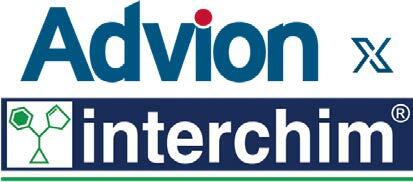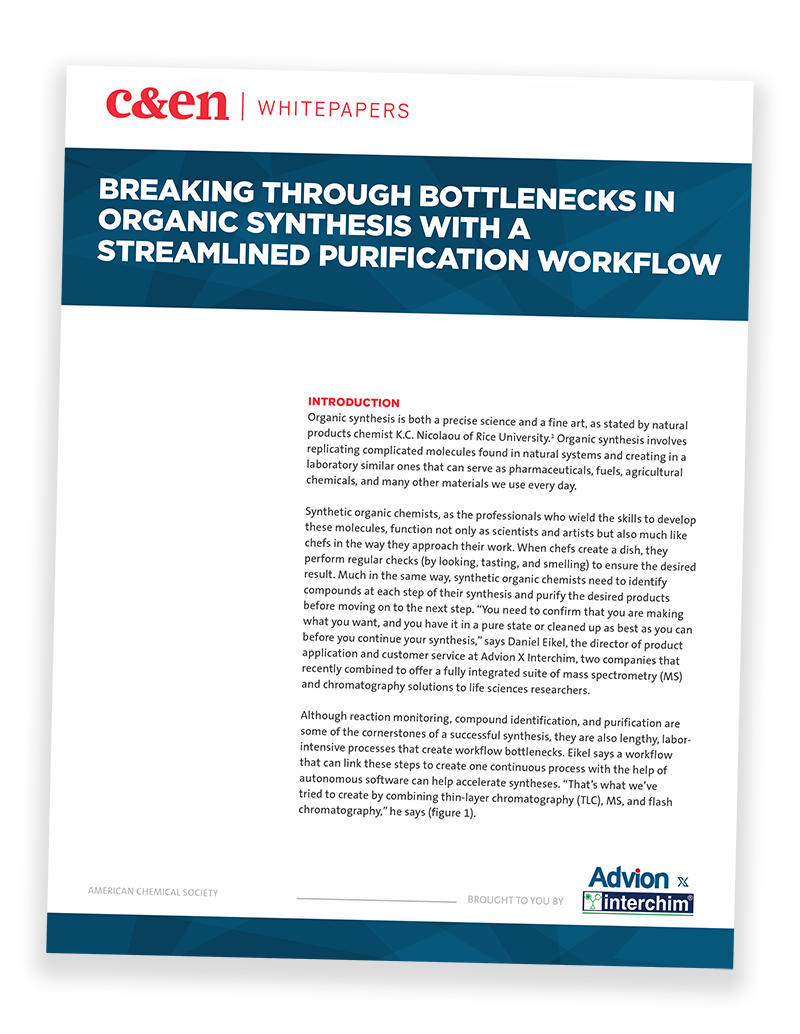
Breaking through bottlenecks in organic synthesis with a streamlined purification workflow
Brought to you by Advion x Interchim
Overview
Successfully completing an organic synthesis involves three typically lengthy, but crucial steps: reaction monitoring, compound identification, and purification. These steps can create bottlenecks in the synthesis, unless a purpose-built, streamlined, and reliable workflow is on hand.
This whitepaper delves into some of the challenges faced by synthetic organic chemists as they navigate compound identification and purification struggles. It also describes how using a workflow that couples thin layer chromatography (TLC) and mass spectrometry (MS) to flash purification can help increase the efficiency of the entire process.
Key Objectives:
- Understand how a workflow that combines thin-layer chromatography, mass spectrometry, and flash purification can increase the speed and efficiency of an entire organic synthesis process.
- Learn about prep-free techniques that have become the new standard: scraping TLC spots, developing flash methods and performing long liquid chromatography/MS runs are not necessary with modern instrumentation that is specifically developed to take the prep-work and guess-work out of the purification process.
- Become informed about a cost-effective, user-friendly benchtop workflow solution for organic compound identification and purification that can save time and money for any lab.
Brought to you by:


Please complete the form to download the whitepaper.
*By submitting this form, you agree to receive more information on related products and services from the American Chemical Society (ACS Publications) via email, in accordance with the ACS Privacy Policy .
Copyright © 2025 American Chemical Society | 1155 Sixteenth Street NW | Washington, DC 20036 | View our Privacy Policy